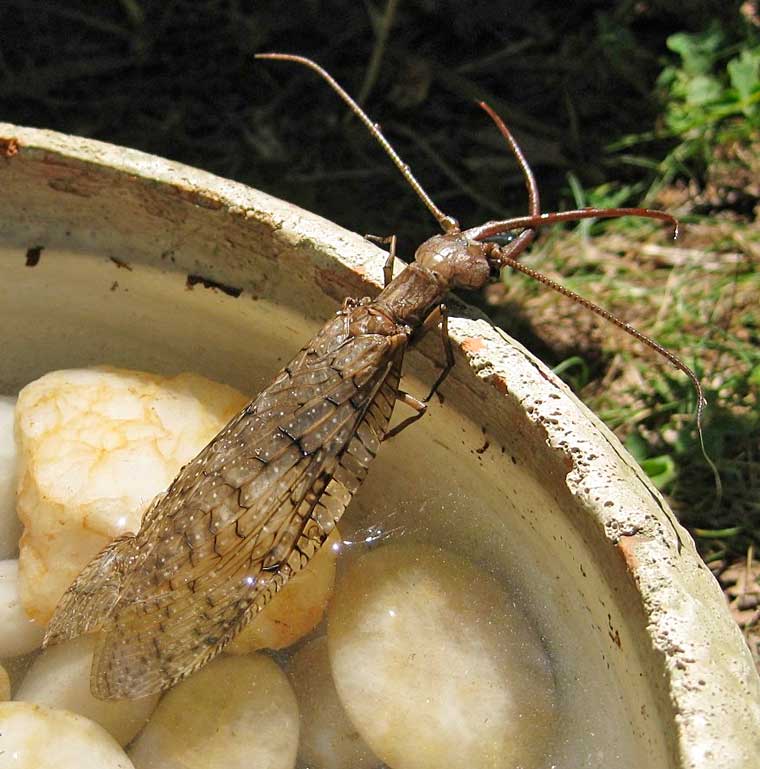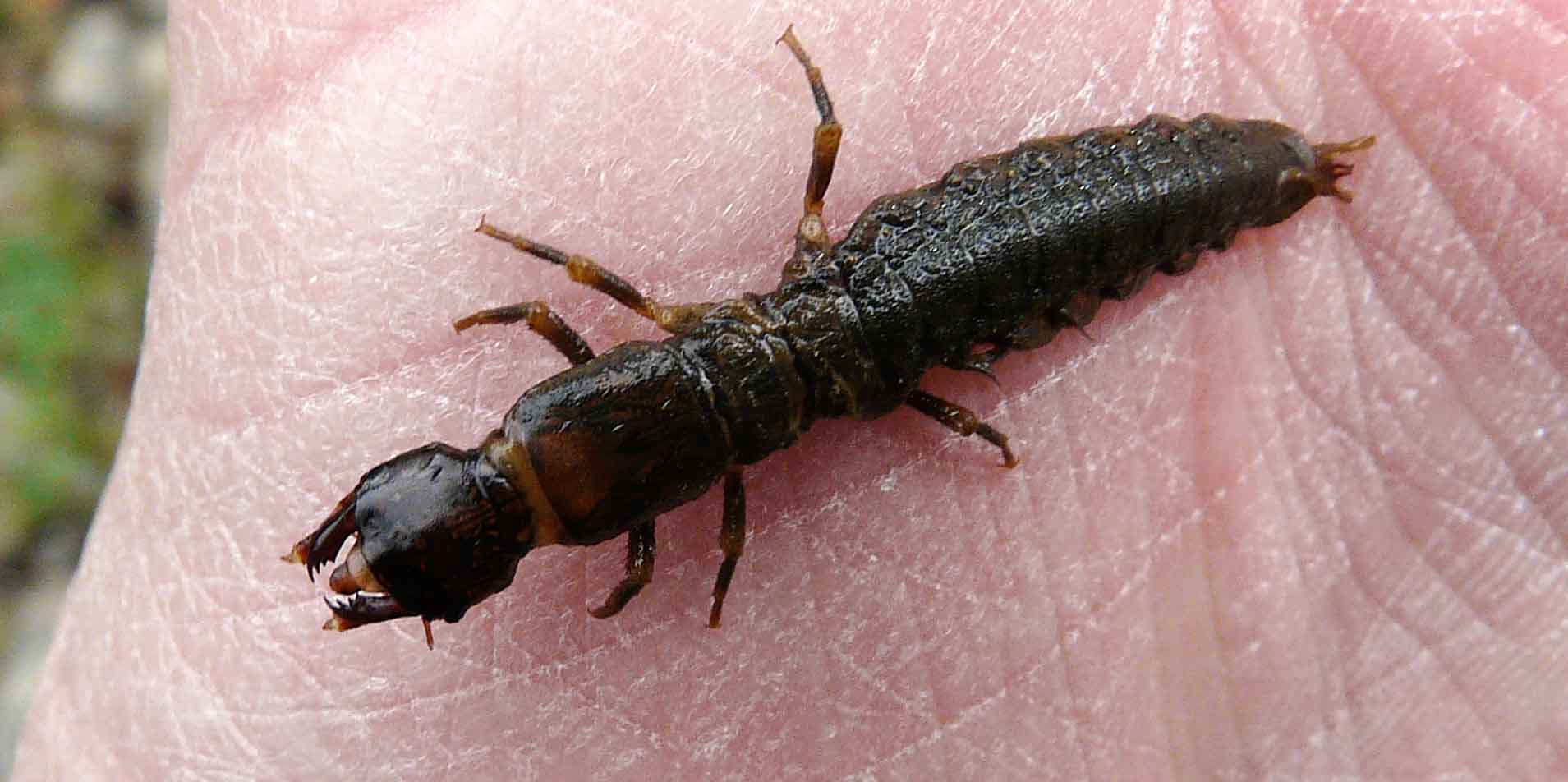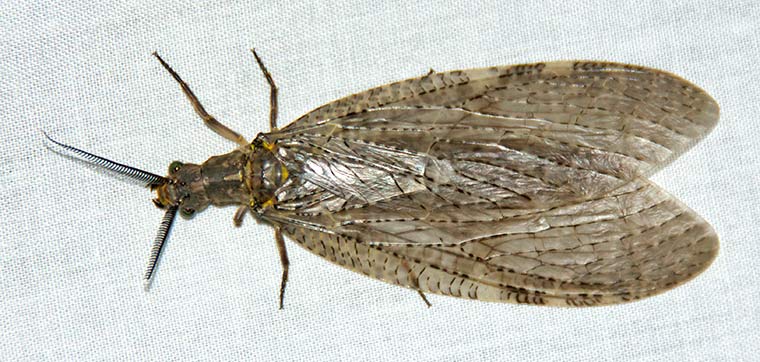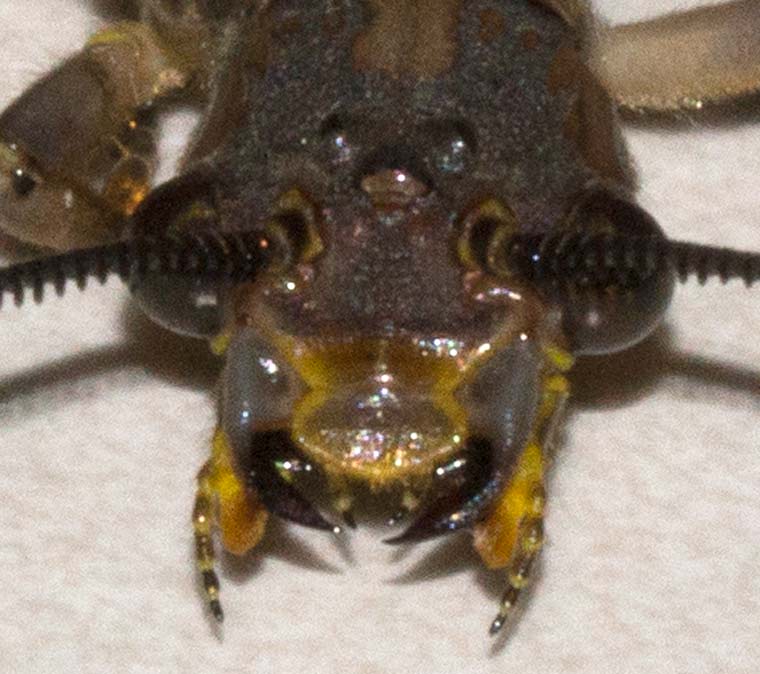No male Dobsonflies have come to our moth sheet yet, but our friend Brenda sent us this excellent picture. Notice the greatly elongated mandibles characteristic of the male. In this photograph they are crossed, but the male is able to open and close them like forceps. The long mandibles are used in courtship displays. Although the males look dangerous, they are not able to close their mandibles with enough force to penetrate human skin. The small white spots in many of the wing cells are characteristic of Dobsonflies.
Dobsonflies spend most of their life in the larval stage, which may last as long as three years. Adults live only about a week. The larvae are aquatic and spend their time in rapidly moving water. The larvae are highly prized as fish bait, and they have many common names. These include hellgrammite, go-daddy, and devil-scratcher. Larvae can deliver a painful bite also, so they should be handled with care.
I have not been able to find a female Dobsonfly yet. I thought I had one when I photographed this creature. However, it turned out to be a Fishfly, (Chauliodes pectinicornis, I think) and a male one at that. Fishflies are the closest relatives of Dobsonflies. They are both in the family Corydalidae of the order Megaloptera (which means “big wings”).
A closer look at the head of this Fishfly reveals a formidable set of mandibles. Five eyes can also be seen. There are two large eyes on either side of the head and three small eyes (ocelli) in a triangular pattern on top of the head.




